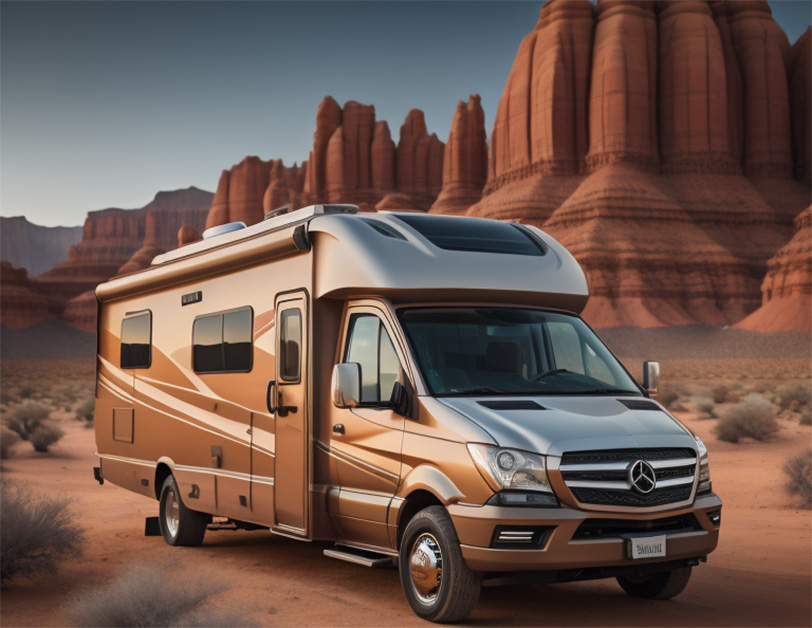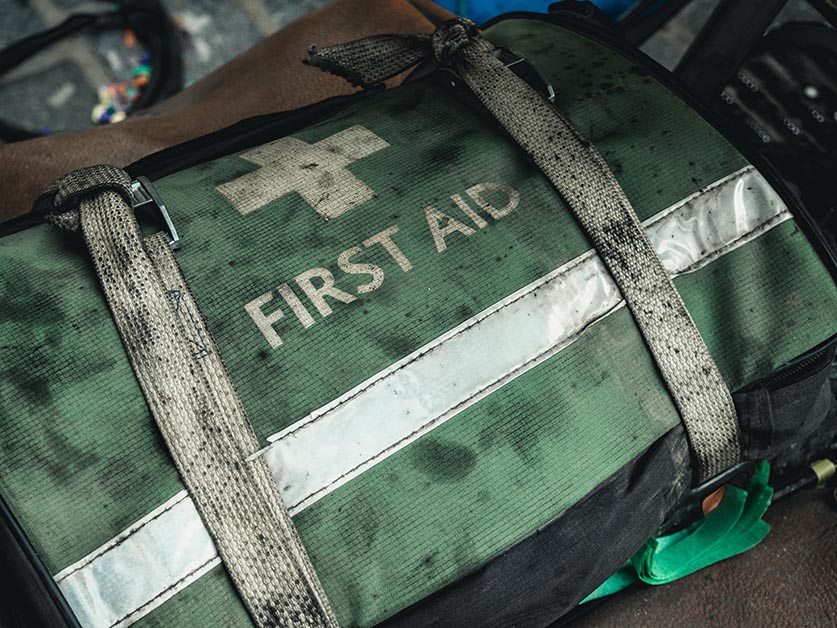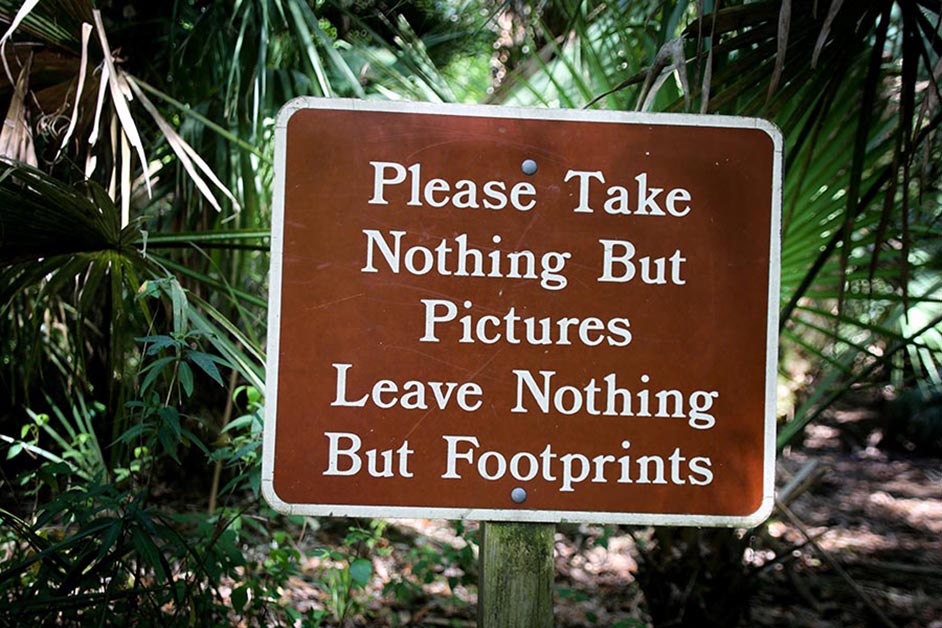by RV Dee
Share
by RV Dee
Share
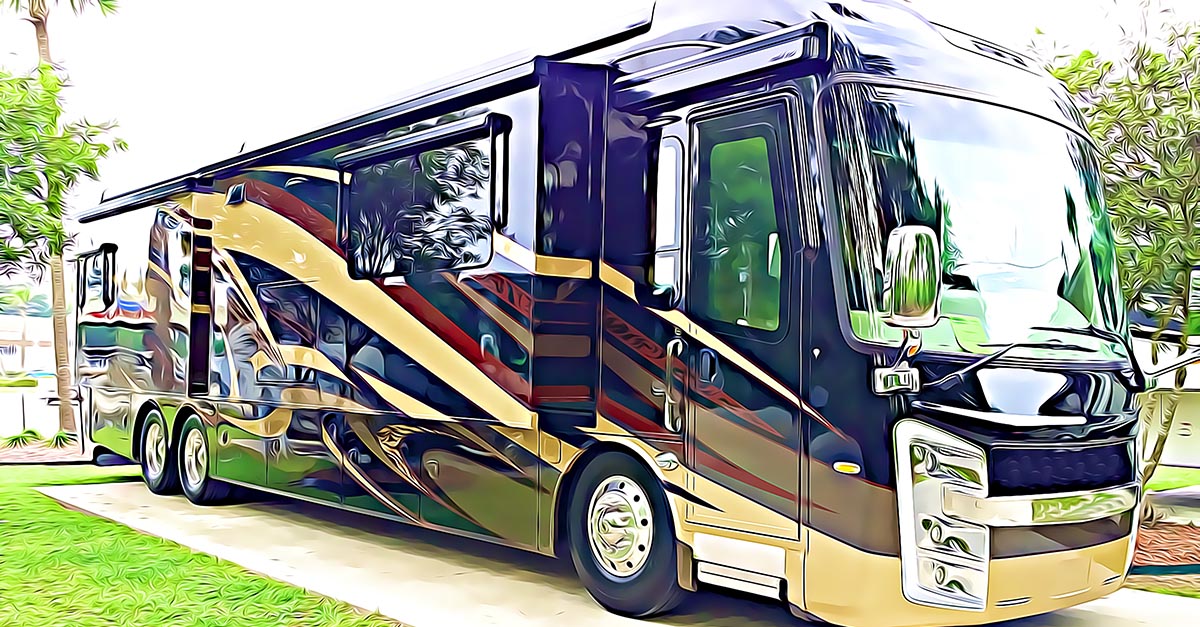
RV Dee’s guide to different RV Types
What is the difference between RV types? There are two distinct types of recreational vehicles (RVs): Motorized and Towable. The main difference between the two types is that motorized RVs are drivable and operate under their own power, while towable RVs are “towed” behind another vehicle that provides the power. Under both categories, there are just five main types but literally thousands of combinations!
Motorhomes
Motorhomes are divided into the following types:
- Class A
- Class B
- Class C
All motorhomes operate under their own power, but that is where the similarity ends! There are three types of motorhomes, but the variety of motorhomes in different classes is seemingly endless.
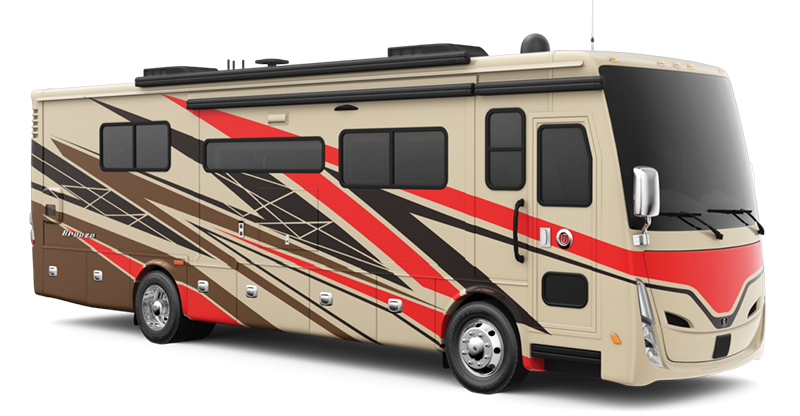
ClassA-Tiffin-Allegro-Breeze-2025
© Photo - Tiffin Motorhomes
Class A
Class A motorhomes tend to be the largest vehicles, but new trends dictate a wide range of sizes. Class A motorhomes are most similar to city buses or charter coaches. Most motorhomes utilize regular gas, but some models operate on diesel fuel. Many people tow vehicles with class-A motorhomes. These “towed” vehicles are referred to as toads, a play on the word “towed.”
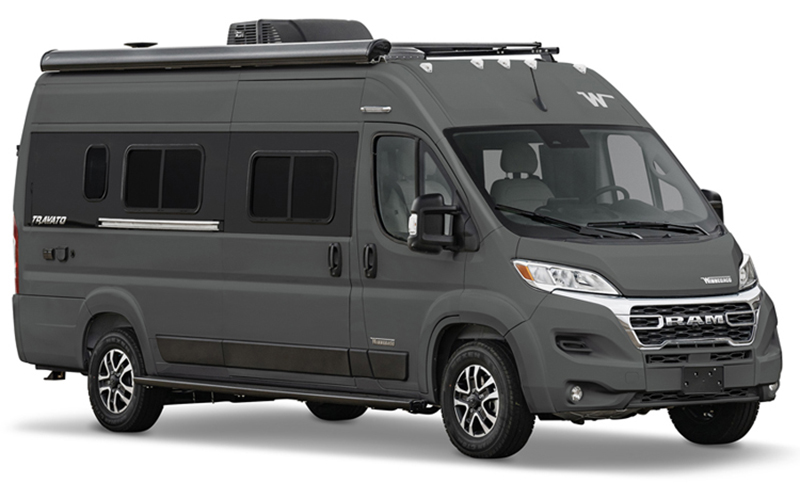
ClassB-Winnebago-Travato-2025
© Winnebago
Class B
Class B motorhomes are generally smaller and have fewer amenities. They look like an oversize van. Many popular models are based on the Mercedes Sprinter or the Ford Transit van. They are also referred to as camper vans.
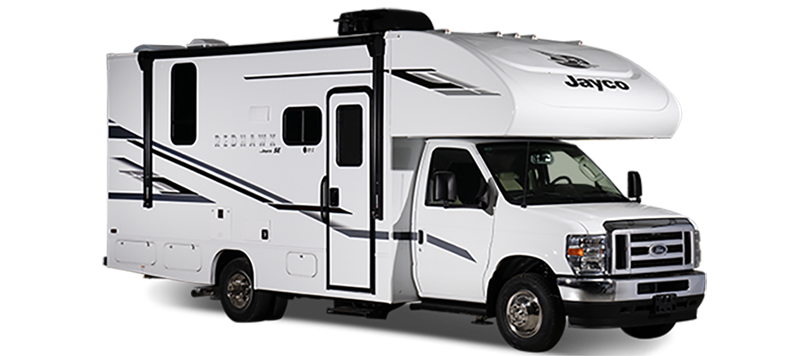
ClassC-Jayco-Redhawk-SE-2025
© Jayco
Class C
Class C motorhomes traditionally have an overhang above the cab, providing sleeping accommodations or storage. The front or cab of these motorhomes looks like a moving truck. Class C motorhomes are usually built on a van frame or heavy-duty truck chassis like the Ford F-450. Many are built with the capacity to tow additional vehicles. Jeeps are preferred “toads” as they are easy to put into neutral and are nimble for sightseeing or just heading to dinner, trails, or the beach.
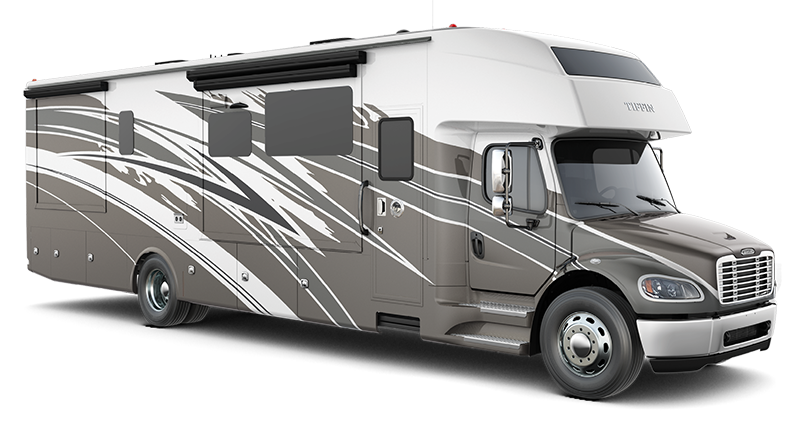
ClassSuperC-Tiffin-Allegro-Bay-2024
© Tiffin Motorhomes
Super Class C
New larger models are sometimes classified as a “Super C” due to their length and a more luxurious interior.
Towable RVs
Towable RVs are divided into four types. Like motorhomes, there are many different variations.
- Travel Trailers
- 5th Wheels
- Destination/Park Models
- Fish House
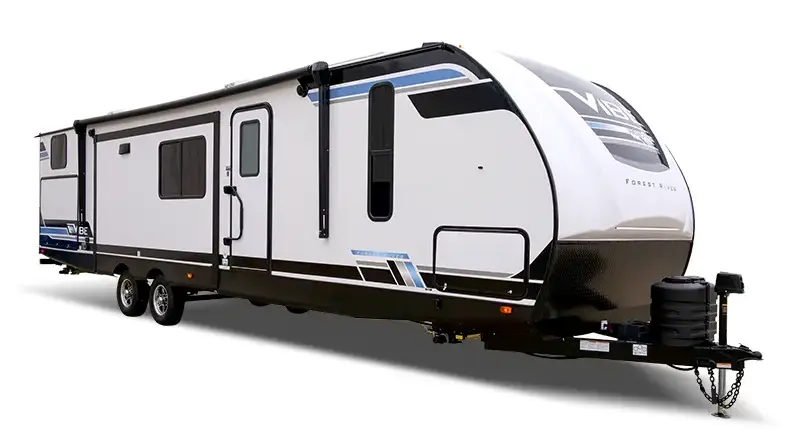
TravelTrailer-ForestRiver-Vibe-2025
© Forest River
Travel Trailer
Travel Trailers are available in a variety of sizes, ranging from approximately 8 feet long to over 40 feet. These consist of teardrops, popups, and full-size campers. Many people refer to travel trailers as tagalongs or bumper pulls. These RVs are attached to a hitch installed on the bumper or frame of the tow vehicle. Depending on the size of the camper, the tow vehicle may be a car, SUV, or pickup truck.
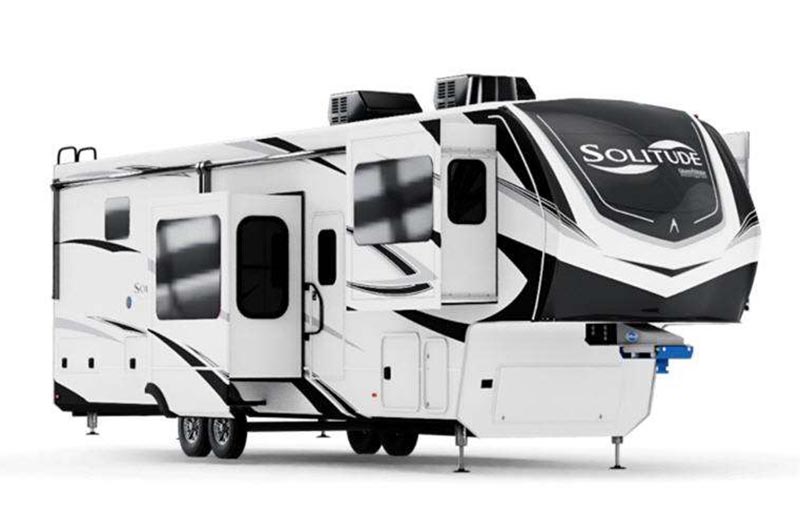
FifthWheel-GrandDesign-Solitude-2025
© Grand Design
5th Wheels
5th Wheels are a special breed. They look similar to a livestock trailer, with the front of the camper rising over the bed of the truck towing it. The camper connects to a hitch affixed to the truck’s bed. There are two primary connections to the tow vehicle. The most popular is the kingpin. This puck-like object slides into the hitch and is secured for towing. The gooseneck connection consists of a ball secured by a special hitch.
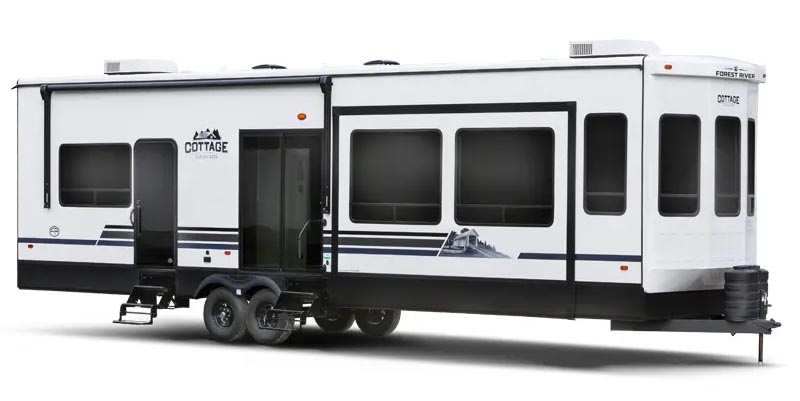
Destination-CedarCreek-Cottage-2025
© Cedar Creek
Destination / Park Models
Destination/Park Models are specifically designed to be towed to a location and left there for an extended time. The main difference between a Park Model and a Travel Trailer is that the suspension is not as robust, and there may be windows on the front, which most travel trailers lack due to the possibility of them being damaged during travel.
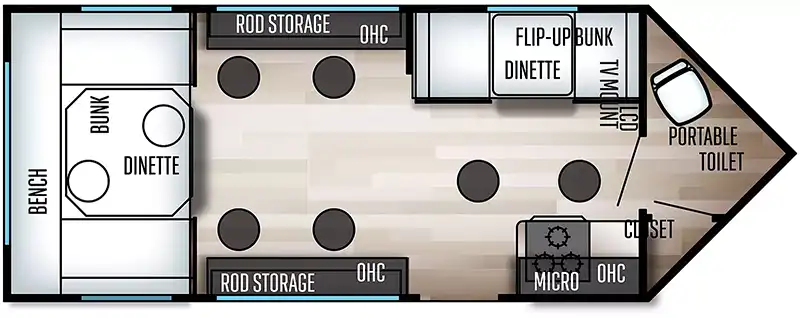
FishHouse-ForestRiver-Cherokee-16BF
© Forest River
Fish House
Fish House models are specifically designed for ice fishing. They have many of the amenities and features of a travel trailer but also have holes in the floor for ice fishing. Gone are the days of towing a cabin mounted on skis out on the ice!
It is important to note that you must adequately size your camper to your tow vehicle for safety reasons. Each manufacturer rates its vehicle’s towing capacity. Exceeding your vehicle’s tow capacity is dangerous, so avoid it at all costs! In addition, it puts unnecessary strain and wear and tear on your vehicle’s engine, transmission, and brakes. Most, if not all, insurance companies will not cover an accident regardless of who is at fault if it is found that the towing capacity has been exceeded. In addition, properly loading your camper is a necessity. Tow vehicle capacity and RV loading will be the subject of another article.
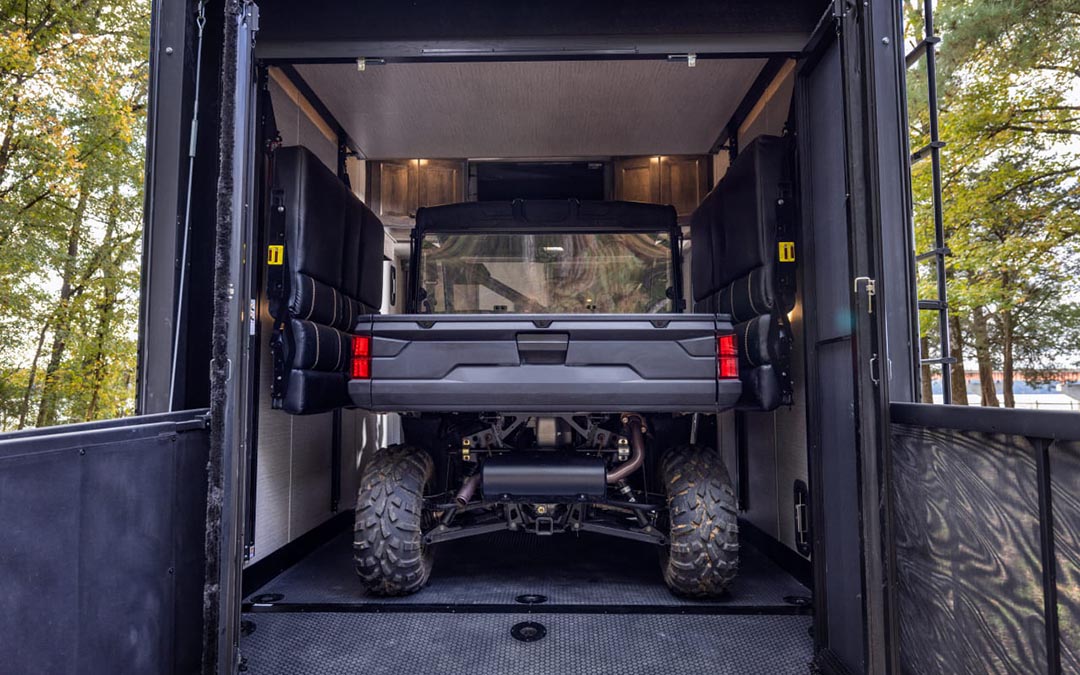
ToyHauler-LazyDays
© Lazy Days RV
Toy Haulers
The term toy hauler can be attached to almost any type of RV, except a Class B. It means that the RV has space to park adult-sized toys, such as motorcycles and all-terrain vehicles (ATVs).
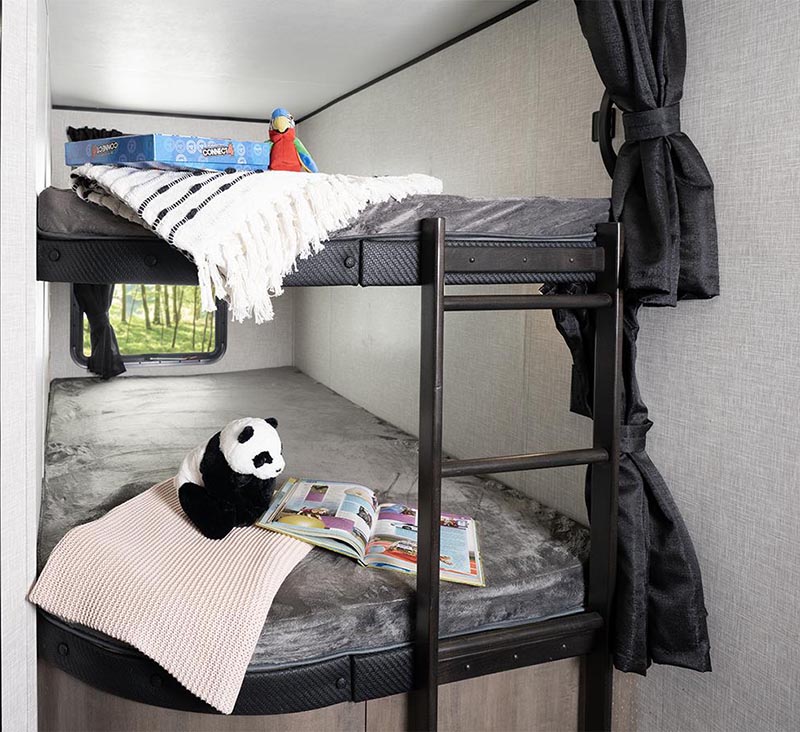
BunkHouse-Jayco-280BHK
© Jayco
Bunk House
The term bunk house can also be attached to many RV types. This means that the RV has bunk beds of some sort. They are typically in addition to the main bed that is in the primary sleeping area.
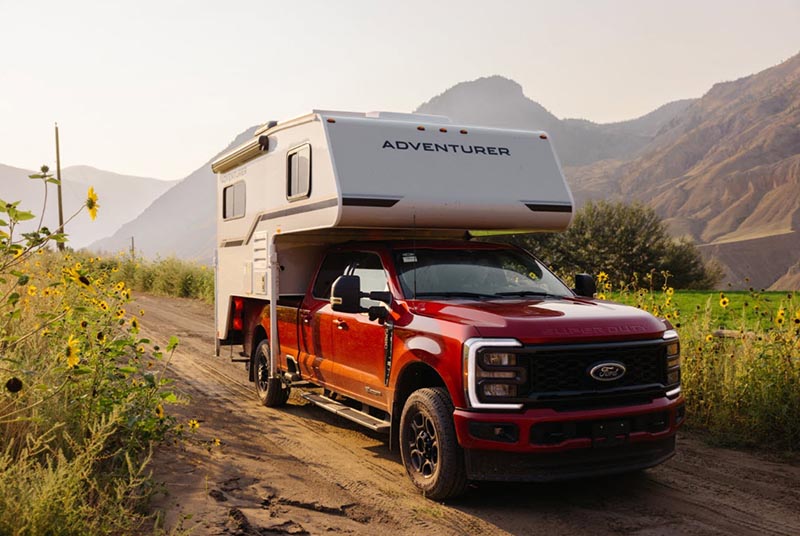
SlideIn-Adventurer
© Adventurer Manufacturing
Truck Slide-In Campers
A truck slide-in camper, also known as a truck bed camper or cab-over camper, is a type of recreational vehicle (RV) designed to fit snugly into the bed of a pickup truck. The camper uses lightweight materials like aluminum or fiberglass to keep the overall weight manageable. The camper has a rear entry door, often with a fold-out or telescoping step system for easy access. A truck slide-in camper is a compact, versatile, and convenient way to travel, offering many of the comforts of home in a portable package that fits into the bed of a pickup truck.
Thanks, RV Dee
Many people are drawn to the allure of the open road, the freedom to explore new destinations, and the comfort of home on wheels that RV travel offers. However, before hitting the road, one of the first decisions that needs to be made is whether to rent or buy an RV. Each option has its
Whether you’re embarking on a wilderness adventure, planning a family camping trip, or simply stocking your home medicine cabinet, having a well-equipped first aid kit is essential for handling life’s little emergencies. From minor scrapes and cuts to more serious injuries, being prepared can make all the difference in ensuring a swift and effective response.
Camping in the great outdoors offers a wonderful opportunity to unwind, connect with nature, and create lasting memories with loved ones. However, it’s important to prioritize safety to ensure a positive and enjoyable experience. From preventing accidents to handling emergencies, here are some essential tips to help you stay safe while camping outdoors. Choose a
As lovers of the outdoors, we have the fantastic opportunity to witness the stunning beauty of nature. However, we are responsible for ensuring that we do not harm the environment while enjoying it. Leave No Trace camping principles guide outdoor enthusiasts to appreciate nature while preserving its natural state. This post will discuss the significance




